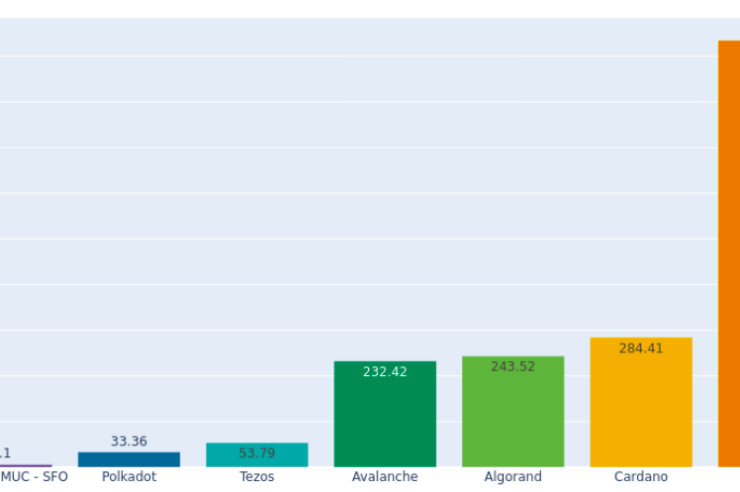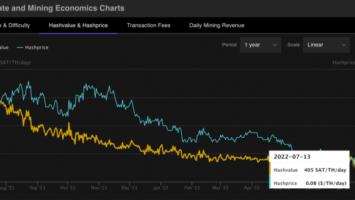Solana (SOL), one of the most active proof-of-stake (PoS) blockchains, appears to be a PoS protocol consuming the lowest amount of electricity per transaction, according to a new report.
The Crypto Carbon Ratings Institute (CCRI), a research startup focused on the environmental impact of cryptocurrencies, released on Wednesday a new report calculating the electricity consumption and carbon footprint of major PoS blockchains.
The CCRI specifically analyzed PoS networks including Cardano, Solana, Polkadot, Avalanche, Algorand and Tezos.
According to the CCRI’s findings, the Solana blockchain consumed 0.166 watt-hours (Wh) of electricity per transaction within the study, becoming the most energy-efficient PoS protocol in terms of energy used per transaction among the six analyzed networks.
Cardano, a PoS network that has the biggest market capitalization at the time of writing, consumes the biggest amount of electricity per transaction, which is 52 Wh, according to the report. However, when it comes to a “per-node” comparison, Cardano uses the least amount of electricity per node, the CCRI found.


“This metric depends on the amount of transactions taking place on the respective blockchain, also the overall electricity consumption per transaction further depends on the number of nodes connected to the respective network. Generally, these numbers are expected to go down with an increase in the transaction rate, regardless which blockchain is in use,” the study reads.
Despite Solana’s low energy consumption per transaction, the PoS protocol still consumes a lot of energy due to the network’s massive usage, compared to other PoS networks. According to the CCRI’s study, the Solana blockchain emits 934 tonnes of carbon dioxide equivalent per year, compared to 33 tonnes for Polkadot.
At the time of writing, Solana is the most-traded PoS protocol, with $2.9 billion in daily trading volumes, while Polkadot has about $900,000 in daily trading volumes, according to data from CoinGecko.


Related: Fossils vs Renewables, PoW vs PoS: Key policy issues around crypto mining in US
Unlike major blockchain networks like Bitcoin and Ethereum, which use mining operations to confirm transactions based on a proof-of-work (PoW) mechanism, PoS blockchains rely on users simply locking up tokens. As PoS blockchains do not need extra energy from miners in order to validate transactions, they are considered as being more energy efficient.
As previously reported, many global financial regulators have used PoW’s high energy consumption rates as yet another reason to ban the use of cryptocurrencies like BTC. They would probably also want to ban global banks as the traditional banking system was reportedly consuming twice more energy than the entire Bitcoin network as of March 2021.






















Comments (No)